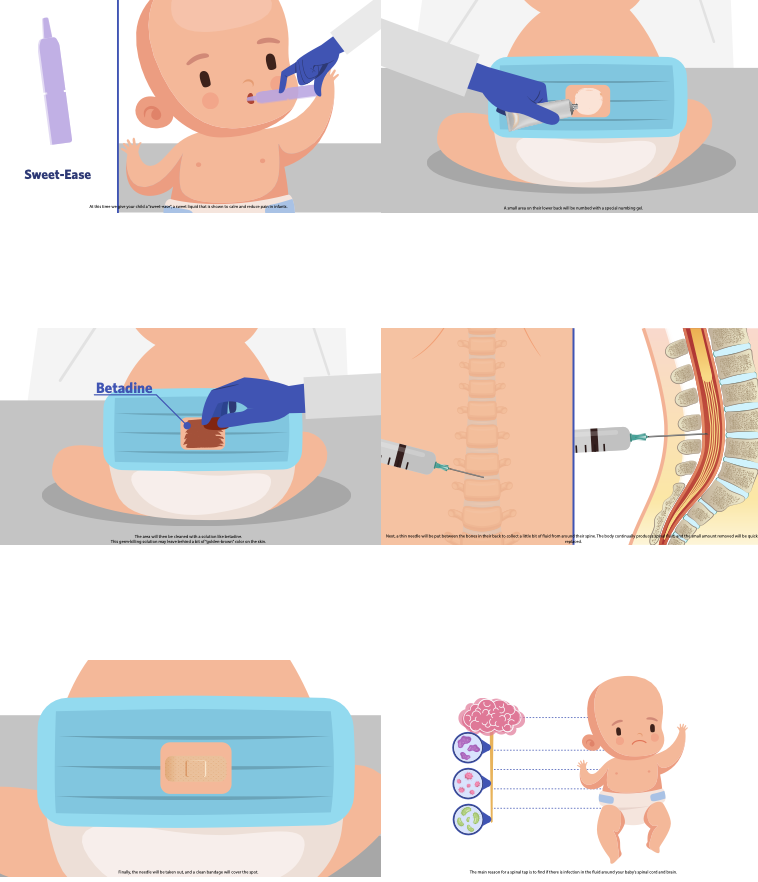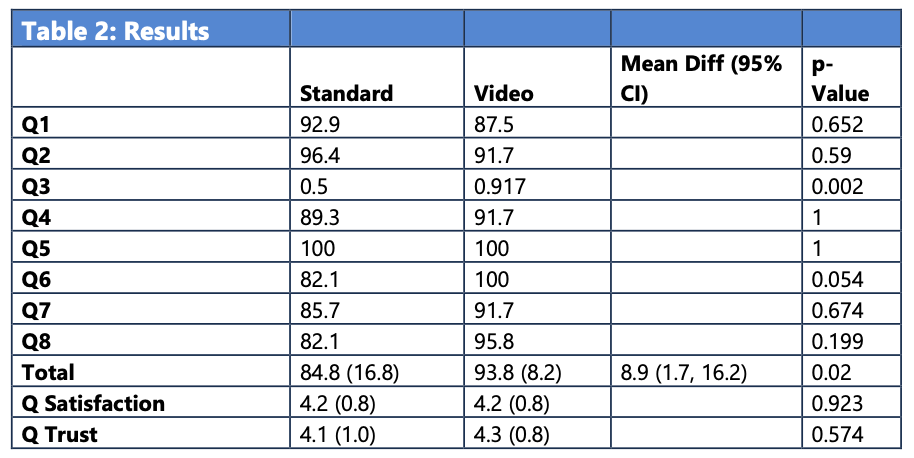Emergency Medicine 6
Session: Emergency Medicine 6
285 - Ready, Set, Consent: Video-Assisted Consent for Neonatal Lumbar Punctures - A Randomized Controlled Trial
Saturday, April 26, 2025
2:30pm - 4:45pm HST
Publication Number: 285.6173
Niharika Goparaju, Dell Children's Medical Center of Central Texas, University of Texas Dell Medical School, Austin, TX, United States; Sujit Iyer, University of Texas at Austin Dell Medical School, Austin, TX, United States; Matthew Wilkinson, University of Texas at Austin Dell Medical School, Austin, TX, United States; Lina Palomares, Dell Children's Medical Center of Central Texas, Austin, TX, United States

Niharika Goparaju, MD MPH (she/her/hers)
Pediatric Emergency Medicine Fellow, PGY-6
Dell Children's Medical Center of Central Texas, University of Texas Austin, Dell Medical School
Austin, Texas, United States
Presenting Author(s)
Background: Neonatal lumbar punctures (LP) are essential for diagnosing conditions like meningitis, yet obtaining informed consent in emergencies is challenging due to procedural complexity, parental anxiety, and varying literacy levels. Traditional verbal consent may not ensure full comprehension. Informational health videos have shown promise in improving patient understanding and satisfaction, but their effect on consent for neonatal LPs remains unexplored.
Objective: We hypothesized that video-assisted consent discussions would improve parental comprehension and satisfaction for neonatal LPs versus traditional consent alone and that the use of videos would not impact refusal rates.
Design/Methods: This prospective randomized, controlled trial was conducted at a large, urban, quaternary children’s hospital in Central Texas. Parents of neonates (0-6 months) scheduled for an LP were assigned to standard verbal consent (control) or verbal consent plus a 2-minute animated video (intervention). The video, developed via a modified Delphi method and available in English and Spanish, explained the LP's purpose, risks, benefits, and procedure. The primary outcome was comprehension, assessed post-consent. Secondary outcomes included satisfaction, refusal rates, and qualitative feedback.
Results: Groups had comparable demographics; average neonatal ages were 27.4 days (standard) and 18.6 days (video). Both groups included Spanish-speaking participants, with a higher proportion in the standard group. Parental education was slightly higher in the standard group. Comprehension scores were higher in the video-assisted consent group (mean: 93.8) versus verbal alone (mean: 84.8, p = 0.03). Satisfaction scores were similar between the groups (mean: 4.2, p = 0.923), as were provider trust ratings (video: 4.3, standard: 4.1, p = 0.574). Consent refusal rates were low overall, 5.8%, with no difference between the groups.
Conclusion(s): The video-assisted consent process significantly improved parental comprehension of neonatal LP consent, highlighting the potential of multimedia tools in emergency settings. Future research should examine video-assisted consent across procedures, ED flows like discharge, and non-English-speaking populations to refine its applications and limitations. A small sample size, particularly among Spanish-speaking parents, limited assessment of video benefits for those with limited proficiency.
Figure 1: Storyboard of Key Steps in Neonatal Lumbar Puncture from Video-Assisted Consent
 This storyboard sequence illustrates the key steps in the video-assisted consent animation for neonatal lumbar puncture (LP). The process includes administering Sweet-Ease (a sucrose solution) for comfort, preparing the injection site with Betadine, positioning and securing the neonate, performing the LP, applying a sterile dressing, and explaining the purpose of the procedure in testing for infections in the cerebrospinal fluid.
This storyboard sequence illustrates the key steps in the video-assisted consent animation for neonatal lumbar puncture (LP). The process includes administering Sweet-Ease (a sucrose solution) for comfort, preparing the injection site with Betadine, positioning and securing the neonate, performing the LP, applying a sterile dressing, and explaining the purpose of the procedure in testing for infections in the cerebrospinal fluid.Table 1. Demographics of Parents in Standard and Video-Assisted Consent Groups
 This table compares demographic characteristics between parents in the standard consent group (N=28) and the video-assisted consent group (N=24).
This table compares demographic characteristics between parents in the standard consent group (N=28) and the video-assisted consent group (N=24).Table 2: Results Comparing Standard and Video Assisted-Consent Methods
 This table presents the results of a comparison of the standard verbal consent method and a video-assisted consent method across several questions (Q1-Q8), assessing parental understanding, with the last two questions specifically examining parental satisfaction and trust. Mean scores, mean differences with 95% confidence intervals (CI), and p-values are provided. Significant differences were noted, indicating higher comprehension in the video group, while satisfaction and trust scores showed no significant differences between groups.
This table presents the results of a comparison of the standard verbal consent method and a video-assisted consent method across several questions (Q1-Q8), assessing parental understanding, with the last two questions specifically examining parental satisfaction and trust. Mean scores, mean differences with 95% confidence intervals (CI), and p-values are provided. Significant differences were noted, indicating higher comprehension in the video group, while satisfaction and trust scores showed no significant differences between groups.Figure 1: Storyboard of Key Steps in Neonatal Lumbar Puncture from Video-Assisted Consent
 This storyboard sequence illustrates the key steps in the video-assisted consent animation for neonatal lumbar puncture (LP). The process includes administering Sweet-Ease (a sucrose solution) for comfort, preparing the injection site with Betadine, positioning and securing the neonate, performing the LP, applying a sterile dressing, and explaining the purpose of the procedure in testing for infections in the cerebrospinal fluid.
This storyboard sequence illustrates the key steps in the video-assisted consent animation for neonatal lumbar puncture (LP). The process includes administering Sweet-Ease (a sucrose solution) for comfort, preparing the injection site with Betadine, positioning and securing the neonate, performing the LP, applying a sterile dressing, and explaining the purpose of the procedure in testing for infections in the cerebrospinal fluid.Table 1. Demographics of Parents in Standard and Video-Assisted Consent Groups
 This table compares demographic characteristics between parents in the standard consent group (N=28) and the video-assisted consent group (N=24).
This table compares demographic characteristics between parents in the standard consent group (N=28) and the video-assisted consent group (N=24).Table 2: Results Comparing Standard and Video Assisted-Consent Methods
 This table presents the results of a comparison of the standard verbal consent method and a video-assisted consent method across several questions (Q1-Q8), assessing parental understanding, with the last two questions specifically examining parental satisfaction and trust. Mean scores, mean differences with 95% confidence intervals (CI), and p-values are provided. Significant differences were noted, indicating higher comprehension in the video group, while satisfaction and trust scores showed no significant differences between groups.
This table presents the results of a comparison of the standard verbal consent method and a video-assisted consent method across several questions (Q1-Q8), assessing parental understanding, with the last two questions specifically examining parental satisfaction and trust. Mean scores, mean differences with 95% confidence intervals (CI), and p-values are provided. Significant differences were noted, indicating higher comprehension in the video group, while satisfaction and trust scores showed no significant differences between groups.
